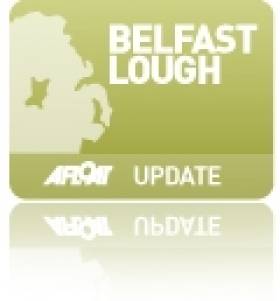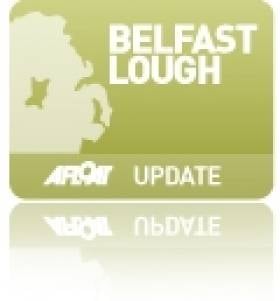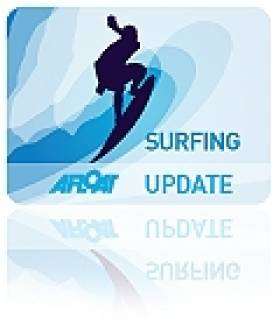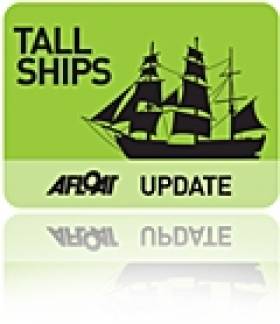Displaying items by tag: disability
Half-Million-Euro Fund To Improve Access To Angling
#Angling - A new fund to support projects for sustainable and accessible angling in Ireland has been launched by Inland Fisheries Ireland (IFI).
The Capital Works Fund of €500,000 is available for angling groups and clubs who are looking to improve access and infrastructure for angling.
The fund is aimed specifically at capital improvement works, with grants available to all groups and individuals including local development associations, tidy towns, angling clubs and others looking to improve access to angling.
The types of projects eligible for funding must provide for public access and include the following:
- Clearing and fencing along rivers/ lakes to allow access for angling.
- Disability-friendly angling stands.
- Car parks to improve access for anglers (new car parks and upgrades to existing carparks).
- Walkways to improve access for anglers.
- Stands, styles, footbridges and boat slips.
- Accessible angling boats.
Sean Kyne TD, Minister of State with responsibility for the inland fisheries sector, said: “Accessibility for people of all abilities is a priority if our inland fisheries are to be enjoyed by everyone.
“I welcome the investment which will open angling activity to a wider range of participants and I would encourage the community based groups to apply for funding.”
The funding scheme forms part of IFI’s National Strategy for Angling Development which aims to ensure that Ireland’s fish stocks and angling infrastructure are protected and enhanced for the economic value and recreational benefit which they offer to communities across Ireland.
The fisheries resource is worth €836 million to the Irish economy annually and supports upwards of 11,000 jobs, often in rural and peripheral communities.
IFI head of business development Suzanne Campion added: “We are now inviting applications for funding for ‘shovel-ready’ projects which will improve access to angling.
“This is a vital step in developing facilities for the 273,600 anglers currently in Ireland and the 163,000 international visitors who fished here in 2015. By improving access, we can help grow domestic participation in angling and encourage more visitors to our country every year.”
Campion said the National Strategy for Angling Development “aims to grow the annual economic contribution of angling by €96 million over the next five years, creating an additional 1,800 jobs and attracting 40,000 more tourists annually.
“We are calling on angling development groups to apply for funding through this scheme. Together, we can ensure our angling infrastructure is developed and we can help remove any barriers to participating in this valuable activity.”
Applications for funding should be submitted via the online application form.
Applications will be evaluated in light of the objectives of IFI’s National Strategy for Angling Development, which aims to make angling accessible and attractive through information, infrastructure and support, to develop tourism through the promotion of angling and to establish recognition of angling as an important leisure and recreational pursuit. The closing date for applications is Tuesday 8 November.
IFI said it expects to continue funding in this area in 2017, and invites expressions of interest (open till the end of November 2016) from those wishing to develop more complex projects to deliver on the National Strategy for Angling Development.
Belfast Lough Sailability Hails Community Fundraising
#BelfastLough - Antrim-based charity Belfast Lough Sailability has underscored the importance of community fundraising to its cause, as the Carrick Times reports.
The training organisation for sailors with disabilities, which is currently seeking more volunteers to assist in its teaching efforts, was one of a number of charities celebrating 25 years of the grant partnership between BT, the Communication Workers' Union and the Community Foundation for Northern Ireland.
Belfast Lough Sailability (BLS) chair Anne Taylor said the grant scheme, that has awarded over £1 million to community groups over the years, aided funding of specialised training for its own instructors.
BLS is now looking into an even more ambitious project - a purpose-built home base at Carrickfergus Marina on Belfast Lough that would enable the charity to expand its remit across Northern Ireland.
The Carrick Times has more on this story HERE.
Belfast Lough Sailability Seeks More Volunteers For Training
#BelfastLough - Belfast Lough Sailability is on the lookout for new volunteers to assist in its sail training efforts for people with disabilities.
As highlighted in the Carrick Times recently, the Northern Irish charity regularly runs training sessions from its base at Carrickfergus Marina on Belfast Lough, making use of its fleet of specially adapted boats.
But the practical training - provided by a team of qualified instructors as well as a number of disabled sailors - also involves skills useful off the water, such as first aid.
The Carrick Times has more on the story HERE.
Public Consultation Opens On Disability Action Plan For Inland Waterways
#InlandWaters - Waterways Ireland has opened a public consultation on its draft Disability Action Plan for Ireland's inland waterways.
According to the cross-border body for Ireland's main inland navigations, the draft represents its commitment "to promoting positive attitudes towards people with disabilities and encouraging their participation in public life".
The draft plan is aligned with guidance from the Equality Commission of Northern Ireland in accordance with Section 49A of the Disability Discrimination Act, 1995 (as amended by the Discrimination (NI) Order, 2006).
Waterways Ireland says it hopes to "obtain wide ranging views" on the draft plan and "invite ideas on how best we can develop and promote increased participation opportunities for people with disabilities".
The consultation is open until 2 March 2015. Download the draft plan, and find details on how to participate, on the Waterways Ireland website HERE.
#Surfing - The third annual Long Line Disabled Surf Festival will take place at Limavady's Benone Strand on Saturday 14 June, according to the Londonderry Sentinel.
Afloat.ie previously reported on the inaugural event hosted by the Long Line Surf School in the North Co Derry town, which brought together more than 30 people with disabilities aged from eight to 25, many of whom were trying out surfing for the first time.
Long Line's Dan Lavery says confidence is the key to enjoying surfing, whatever one's differing abilities or experience level - so everyone taking part will have at least one volunteer lifeguard or surf instructor on hand to help them catch the waves.
The Londonderry Sentinel has more on the story HERE.
Disabled Sailors More Than Welcome at Galway VOR Finale
#VOLVO OCEAN RACE - A new accessible pontoon and ramp in Galway Harbour will enable disabled sailors to get fully involved in events to celebrate the Volvo Ocean Race finale next weekend, the Galway City Tribune reports.
The permanent pontoon has been set up at the docks in the city centre, giving wheelchair users complete access to and from boats moored in the marina - along with the thousands who will be given the opportunity to learn to sail during the VOR weekend.
A highlight of the festivities will be the Irish Disabled Sailing Association regatta, which will see over 100 sailors with physical disabilities in competition on Galway Bay.
Previously the only access for disabled sailors in Galway was via a small slipway at Galway Bay Sailing Club in Oranmore, which made boarding and alighting an awkward process.
But the new pontoon is hoped to leave a lasting legacy for the City of the Tribes - and encourage many more wheelchair users to get afloat.
“The rehearsal last week went really well," said Liz Gantly of the Galway Speeders Club, which promotes sport for young people with disabilities. "We are hoping to have over 100 disabled people from all over the country trying out sailing during the Volvo Ocean Race.”
The Galway City Tribune has more on the story HERE.
Irish Wheelchair User Joins Kitesurfing Clinic in Athens
#KITESURFING - Northern Ireland's Jenny Ridley will be among those joining a kitesurfing clinic for people with disabilities in Athens, Greece from this weekend, as Surfer Today reports.
The five-day workshop at the Karavi Beach Club in Schinias will be hosted by Christophe Martin, developer of a special kiteboarding seat for paraplegic athletes.
As previously reported on Afloat.ie, Jenny Ridley has been learning to kite on land under the tutelage of friend Jason McGrugan who has worked with her to design a custom seat and board that will enable her to get on the water.
And she's promised to do just that in Greece this week, joining many other abled and disabled riders in the warm Aegean waters.
Martin will demonstrate the latest techniques developed to teach kitesurfing for people with disabilities. Those taking part will get a chance to go on the water using modified catamarans to show how accessible watersports can to be to everyone.
Surfer Today has more on the story HERE.
Tall Ship Sail Training Open to All With Autumn Voyages
#TALL SHIPS - Sail Training Ireland for Youth Development (STIYD) has announced a golden opportunity for the general public to sail on a tall ship.
Hot on the heels of the Tall Ships Races visit to Dublin this August, a series of three tall ship voyages have been scheduled to take place to and from Irish ports by the UK-based Jubilee Sailing Trust (JST) on its 65-metre tall ship Tenacious between 11 October and 4 November 2012.
The first sailing from Southampton to Dublin (via Waterford) runs for 10 days from 11-20 October, followed by a seven-day jaunt from Dublin to Belfast from 22-28 October, and another seven-day trip from Belfast to Milford Haven from 29 October-4 November. Each voyage will have room for 40 trainees.
Anyone aged 16 and above can join the voyage crew as a trainee, and no previous experience is necessary.
Tenacious is also specially designed to cater for the needs of people with varying degrees of physical disability, including wheelchair users.
Features on board Tenacious and her sister ship Lord Nelson include signs in braille, lifts between decks, power assisted and 'joystick' steering, wide aisles and low-level fittings, guidance tracks and other on-deck pointers, and a speaking compass with digital screen.
STIYD says it is committed to providing access to tall ship sailing for the people of Ireland. The JST has also offered these voyages at a greatly reduced rate to encourage Irish trainees to get on board with what is hoped can become an annual event.
“It is great to see that the international tall ship fleet is reacting to recent activity in Irish sail training," said Michael Byrne, manager at STIYD. "Now that there is a central point of contact for trainees and vessel operators through STIYD, we can expect to see more and more of this kind of activity.
"When the JST approached us with a proposal to run their Irish Sea programme we offered our full support in promoting the opportunity. A unique and hugely important aspect to the JST is its ability to cater for people with varying degrees of physical ability.”
Kyle O’Regan of STIYD's youth branch added: “It is great for Irish trainees that the JST has arranged for Tenacious to have an Irish Sea programme. Being able to join or leave in your own country is a major advantage in terms of lowering costs.”
Meanwhile, the JST's Grainne Arntz said the charity has shown its "commitment to Ireland" by scheduling these autumn voyages.
"Three years ago we introduced the Ultimate Transition Year Tall Ship Adventure, a programme whereby groups of Transition Year students from Irish schools experience the challenge of tall ship sailing with diverse people.
"These voyages in the autumn will allow more groups and individuals to avail of the unique JST experience of sailing on a tall ship with people of all ages and abilities.”
The tall ship voyages are priced at £775 per person for the 10-day trip, and £525 per person for the seven-day excursions. To book your voyage with the JST visit their website HERE or call +44 23 8044 9108.
For information on the Irish branch of the Jubilee Sailing Trust visit www.jstireland.ie. For general information on sail training activities in Ireland contact Sail Training Ireland, Port Centre, Alexandra Road, Dublin 1 at 01 887 6046, e-mail [email protected] or visit www.irishsailtraining.com.
STIYD is the national sail training organisation for Ireland and is endorsed as such by Sail Training International. The vision of STIYD is to “provide access to the sail training experience for the people of Ireland”.
#MCIB - The decision to set out in poor weather, coupled with limited safety instruction, led to the tragic death of a Romanian angler on Lough Mask last summer, according to a report by the Marine Casualty Investigation Board (MCIB).
Mircea Ungur drowned after the angling boat he was in capsized in choppy waters brought on by squalling Force 8 winds on the afternoon of 8 May 2011.
Ungur had a tracheostomy tube in his throat resulting from a previous battle against throat cancer, and drowned after taking in water through this tube, the MCIB concluded. It was also found that most of his companions and the guide knew nothing about the tube.
At the time of the incident, Ungur had been on an angling holiday in Co Mayo with five colleagues accompanied by a fishing guide. On the morning of 8 May the group set out from Cappaduff in Tourmakeady on two boats, following a brief discussion about fishing and safe departure from the pier.
Winds were already reaching Force 4-6 when the group departed and sought a sheltered area of the lough to fish. After lunch winds had picked up to Force 8 and the guide signalled for a return to Tourmakeady.
At around 1.5km from the pier at Cappaduff, a wave swamped the leading boat that contained Ungur, a companion and the guide. All three on board, who were wearing buoyancy aids, went into the water.
Ungur was the first taken on board the other boat after some 10 minutes in the water. He was not moving or communicating with the others, and CPR was not administered until the boat reached the shore 20 minutes later. Ungur was pronouced dead just before 3pm.
The report concluded that the group had departed despite reservations among them about the poor weather, which had been correctly forecast that day. There was also little discussion with the anglers about their level of boating experience, the weather, or any disabilities that would affect their safety on the water.
The MCIB recommended that a full safety briefing should be given to all those hiring angling boats. It also urged the enforcement of safety regulations and certification for recreational water craft.
The full report is available to download as a PDF from the MCIB website HERE.
Belfast Lough Sailability Launches New Sea Rover
Belfast Lough Sailability recently introduced the latest addition to its fleet - thanks to the generosity of the Northern Irish public.
The Sea Rover was funded with £50,000 from the Big Lottery Fund's People's Millions award, as voted for by the general public last year.
The unique vessel features a drop-down bow to enable direct access for wheelchair users, as well as an integral crew hoist to assist boarding.
The charity said: "Belfast Lough Sailability continues to push the boundaries to offer people with a disability, their families and carers the opportunity to get out on the water and enjoy a range of activities, which would not normally be available to them."







































































